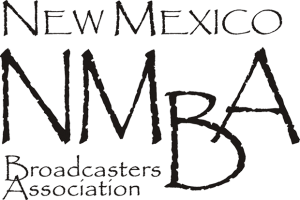Organizations cannot accept funds from both programs, but they are welcome to apply to both and determine which one is the best fit before signing off on final terms.
COVID-I
The U.S. Small Business Administration is offering designated states and territories low-interest federal disaster loans for working capital to small businesses suffering substantial economic injury as a result of the coronavirus (COVID-19). Upon a request received from a state’s or territory’s governor, SBA will issue under its own authority, as provided by the Coronavirus Preparedness and Response Supplemental Appropriations Act that was recently signed by the President, an Economic Injury Disaster Loan declaration.
- Any such Economic Injury Disaster Loan assistance declaration issued by the SBA makes loans available statewide to small businesses and private, non-profit organizations to help alleviate economic injury caused by the coronavirus (COVID-19). This will apply to current and future disaster assistance declarations related to coronavirus.
- SBA’s Office of Disaster Assistance will coordinate with the state’s or territory’s governor to submit the request for Economic Injury Disaster Loan assistance.
- Once a declaration is made, the information on the application process for Economic Injury Disaster Loan assistance will be made available to affected small businesses within the state.
- SBA’s Economic Injury Disaster Loans offer up to $2 million in assistance and can provide vital economic support to small businesses to help overcome the temporary loss of revenue they are experiencing.
- These loans may be used to pay fixed debts, payroll, accounts payable and other bills that can’t be paid because of the disaster’s impact. The interest rate is 3.75% for small businesses. The interest rate for non-profits is 2.75%.
- SBA offers loans with long-term repayments in order to keep payments affordable, up to a maximum of 30 years. Terms are determined on a case-by-case basis, based upon each borrower’s ability to repay.
- SBA’s Economic Injury Disaster Loans are just one piece of the expanded focus of the federal government’s coordinated response, and the SBA is strongly committed to providing the most effective and customer-focused
- response possible.
- To apply for these loans, click here – https://disasterloan.sba.gov/.
- For questions, please contact the SBA disaster assistance customer service center at 1-800-659-2955 (TTY: 1-800- 877-8339) or e-mail disastercustomerservice@sba.gov.
COVID-III
The most recent COVID-19 stimulus package expected to become law includes a new SBA loan program, the Paycheck Protection Program, as well as a grant program associated with the EIDL program. The Paycheck Protection Program is intended to keep workers on small business payrolls through offering forgivable loans. The EIDL grant program offers small businesses a one-time $10,000 grant to cover costs in the short term.
The Paycheck Protection Program
Applies to you if:
- You were in business and employed fewer than the greater of 500 people or the SBA size standards in number of employees for your industry on February 15, 2020.
- You are a small business, nonprofit, veterans’ organization, tribal business, or are self-employed, an independent contractor or sole proprietor.
What it does:
- Allows you to apply for a 100% government backed, low interest SBA 7(a) loan up to $10 million. The loan amount will equal 250% of your average monthly payroll costs.
- The period covered for the debt forgiveness is from February 15, 2020 until June 30, 2020.
- The 100% government backed loans and fee waivers will be authorized through December 31, 2020.
- Allows you to use the loan to cover payroll costs, including salaries, paid sick and medical leave, insurance premiums, mortgage, rent and utility payments.
- Allows the loan to be forgiven in an amount equal to what you spent on payroll, rent and mortgage interest (on leases and mortgages in effect on February 15, 2020).
- Reduces the loan amount forgiven proportionately to the reduction in number of employees retained compared to last year and reduced by the reduction in pay of any employee greater than 25% compared to last year.
- To encourage you to rehire your laid-off employees, you will not be penalized for having a reduced payroll at the beginning of the period.
- Ensures that the loan forgiveness amount will not count as taxable income.
- Reduces the amount of loan forgiveness under the Paycheck Protection Program by the amount of your EIDL grant (see below).
- Delegates authority to all current 7(a) lenders to determine your eligibility.
- Prevents you from accessing both this and an SBA disaster relief loan for the same purpose.
How you can access it:
Contact one of SBA’s preferred lenders – https://www.sba.gov/partners/lenders/microloan-program/list-lenders.
Emergency Economic Injury Disaster Loan (EIDL) Grants
Applies to you if:
- You were in business and employed fewer than the greater of 500 people or the SBA size standards in number of employees for your industry on February 15, 2020.
- You are a small business, nonprofit, veterans’ organization, tribal business, or are self-employed or a sole proprietor.
What it does:
- Allows any organization that applied for an EIDL loan due to COVID-19 to request an advance up to $10,000, which SBA must distribute within three days.
- Requires that you will not have to repay the advance, even if you are subsequently denied for an EIDL loan.
- Requires SBA to verify that you are an eligible applicant, which will take the form of an affidavit you sign under penalty of perjury.
- Requires the grant to be used to cover paid sick leave, payroll, rent and mortgage payments, and other repayment obligations you cannot meet due to revenue losses.
- Reduces the amount of loan forgiveness under the Paycheck Protection Program (above) by the amount of your EIDL grant.
How you can access it:
- To apply for EIDL loans, click here – https://disasterloan.sba.gov/.
- For questions, please contact the SBA disaster assistance customer service center at 1-800-659-2955 (TTY: 1-800- 877-8339) or e-mail disastercustomerservice@sba.gov.
